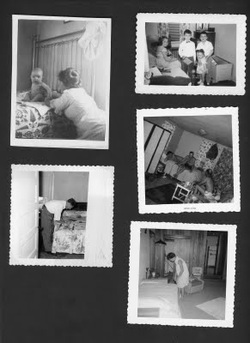 In my ongoing effort to migrate from my old blog AOA, I am continuing in a series of reposts. One of my favorite books on photography is Geoffry Batchen's Each Wild Idea. The book contains 9 essays wrestling with the histories of photography. My favorite chapter, not surprisingly, is on vernacular photography. Batchen's work attempts to elucidate the "complex matter of photography's conceptual, historical, and physical identity." He continues, "Morphology is another of those issues that most histories of photography ignore. Indeed, the invisibility of the photograph, its transparency to its referent, has long been one of its most cherished features. Most of us tend to look at photographs as if we are simply gazing through a two-dimensional window onto some outside world. This is almost a perceptual necessity; in order to see what the photograph is of, we must first repress our consciousness of what the photograph is. As a consequence, in even the most sophisticated discussions, the photograph itself--the actual thing being examined--is usually left out of the analysis. Vernacular photographies tend to go the other way, so frequently do they exploit the fact that the photograph is something that can also have volume, opacity, tactility, and a physical presence in the world. In many cases, the exploitation involves the the subject of the photograph's intervening within or across the photographic act. These subjects make us attend to their photography's morphologies, and thus to look right at rather than only through the photograph. In this sense, vernacular photo objects can be read not only as sensual and creative artifacts but also as thoughtful, even provocative meditations on the nature of photography itself" (Pages 59-60). One of the trajectories of my MFA show was a means to highlight is the physical nature of the photograph. Batchen's text was released in 2001, and since then the digital revolution has only picked up speed further minimizing the physicality of photographic objects. The vernacular photographic objects that I have collected over the past few years intend to highlight the diversity from this relatively young medium. Varying in sizes and processes, the objects mounted in artifact trays, encapsulated in drawers, bins etc intend to suggest the physicality of the photo object. It has been interesting to me in this process the varying sizes, papers, and processes that were quickly cast away as the technology of photography advanced. Fewer and fewer sizes of film and prints were available over time to where we are now, if we print our images at all, have the options of 3.5x5, 4x6, 5x7 etc. Some of my favorite photos that I have collected are the smallest ones that are 2x3ish.
0 Comments
This past month has been a busy and exciting one with two solo shows up simultaneously. Tomorrow, the show Concrete Abstractions at Minot State University will come down and I will make the 3+ hour drive out to pick up the work. Minot State has 2 galleries, one in the art department and one in the library. This exhibition was in the library. It is a unique but quality space for displaying. As Micah Bloom shown with his images below, the reflective surfaces mirror nice angles. (A special thank you to Micah for his photographs...leave it to the photographer (me) to forget to shoot images of his own show at the opening). I am immensely grateful to Minot State for the opportunity to show my work, much of which has not been seen beyond the walls of UND's art department.
Once in a while I am reminded that I am a bit of an anomaly among my fellow artists in that I love writing and presenting papers at conferences. I certainly don't have the empty space in my calendar to take papers on, but I do anyway. They are another form of creative challenge to me.
I've just completed a proposal for a conference at Dordt College in Sioux Center, Iowa called, The Christian Evasion of Popular Culture. The deadline is May 1st so if you are interested, you better get going. Also, this morning I received an email from the Transposition blog about a conference at Trinity Western University in Langely BC on Art and Ethics. The deadline for this one is June 15th so you've got a little more time with that one. 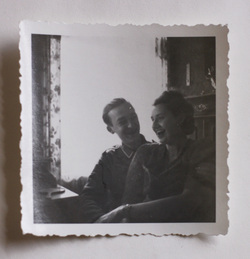 Today's posting is a delacate topic: photographs of Nazi Germany. What are we to do with images of German soldiers? There are various restrictions and laws around the world prohibiting the sales of Nazi memorabilia. (You can see eBay's here.) In spite of the difficult subject matter and horrific legacy of Nazi's upon the world, I feel it is important to consider the images for a number of reasons...and pehaps ones that may seem contradictory. First, we live in a strange time of Holocaust denial. What makes this strange phenomena worse, is that it is growing. Because of photography's veracity, these images and other like them, serve as a reminder of the horrible attrocities the Nazi's committed. These images do so only indirectly, however. Secondly, I noted in my post on the 13th that "photography is intimately caught up with the documentation of place and time, sometimes the poignancy of history, like Barthes prick of the punctum, is startling." One of the other peculiarities about looking at vernacular photographs is that as viewers we are peering into another person's life. And in these cases, they are not able to interpret the image for us. We are outsiders to the photographic event. Many of the photographs I've posted here came in one large lot bought off of eBay. What was striking to me in these photographs, like Barthes punctum, was the domestic nature of in which many of the photographs shot...homes, weddings, with friends and lovers laughing and eating. One of the reasons the photos are important to see is that they humanize those who are often painted in the widest of brush strokes as Nazi's. For me, the prick of these images highlighted the nature of being an American, brought up with Hollywood films full of patriotic American soldiers fighting the Nazi's. And not to deminish the atrocities of the Nazi's nor the sacrifices of Allied troops, but the images remind us of the humanity behind the stereotypes cast about in popular culture. It reminds me of the dangerous power of propaganda within the popular imagination. Of the thousands of photographs that I have, several hundred are of American soldiers. Photographs of them with girlfriend or wife. Photographs of them with parents and siblings. Photographs of them with their children and friends. Photographs of them in their uniforms getting married, going for dinner, relaxing in the safety of their home. The difference between these images is simply the uniform which subsequently triggers all of our collective memory and preconceptions into action. Historically, "stereotypes" originated from an efficient printing process that allowed for repeated usage of one typesetting. We use the term now in a metaphorical manner. “Stereotypes are rather negatively defined as ‘conventional, formulaic and oversimplified conceptions, opinions, or images’ that may communicate without nuance or subtlety. For visual communicators, whether they are filmmakers, photographers, graphic artists, etc…stereotypes are useful devices because they are easily understood and make clear, albeit possibly injurious, points.”[1] “Stereotype is a shorthand way to describe a person with collective, rather than unique characteristics. To stereotype is, in both a real and metaphorical sense, to lose sight of the individual.”[2] And while I absolutely condemn the atrocities committed by the Nazi's, these photographs of the intimate moments of life of these German soldiers remind me to consider the humanity of the individual as well as the larger historical and geopolitical context of their life. [1] Images that Injure, Lester & Dente Ross, xi. [2] Lester & Dente Ross, 2. 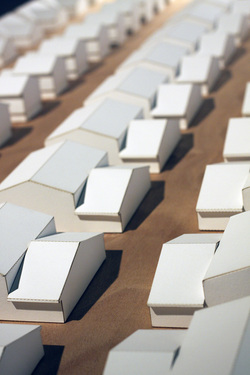 As I said a few weeks ago, it is MFA season here at UND's Hughes Fine Art Center. Last week Meghan Duda presented her work. Influenced by a range of artists from the New Topographics to Gordon Matta-Clark, Meghan's work considers the ubiquity of the suburban home. When Meghan and her husband relocated to Fargo a few years ago, she was struck by the possibility of horizontal expansion has shaped the suburban housing areas of Fargo. Home shapes follow a few rough patterns in theses new developments. And yet Fargo is not alone in that respect. Several of her images come from Utah as well. As someone who shares her interest in the New Topographics, I was immediately struck by (at least what appears to me) a strong lineage with several members of the group, namely Stephen Shore and the Becher's. Her connection to Shore is in subject matter while her connection to the Becher's is in matter of typologies of suburban homes as well as their rigorous system of grids within their installations. Following this method of Becher's typologies, Duda has laser cut the houses from the image thus breaking up the picture plane. By floating the image off the back frame, she is able to accentuate the break and absence with the lighting and shadows. On others, she has used the laser to etch detailed house floor plans over the image. Another one of the key factors in her images is that she also draws upon the objective or sense of detachment so often associated with the group but extends backward strongly to Ed Ruscha. Like the New Topographers, she attempts to stay neutral...balancing between critique and endorsement. 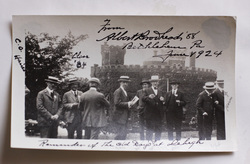 I have said numerous times in the past that receiving an emvelope or package of photographs in the mail from eBay reminds me a lot of collecting baseball cards in my youth. And like Forrest Gump's box of chocolates, you never know what you are gonna get. And while photography is intimately caught up with the documentation of place and time, sometimes the poignancy of history, like Barthes prick of the punctum, is startling. This photo does that for me. It is one of many recieved in a packet sometime this spring. What I love about it is the the beautiful script that dates and a name or two of the men standing around at Lehigh. Not only is the date of the photograph given in June of 1924, but the dates of graduation of these men. The photograph was taken by Albert Broadhead, aparently a well-known and generous 1888 alumnus of Lehigh. "When Albert Brodhead learned of James Ward Packard’s large gifts to Lehigh, he asked then university treasurer Walter Okeson if Packard had visited Lehigh since his graduation. Okeson said no, and Brodhead replied, “It seems to me if an alumnus without any local contact with the university can do so much, that I, who have always lived here and whose father was one of the early trustees of Lehigh, should do my share.” Brodhead’s father, Charles, for whom Brodhead Avenue is named, acquired extensive properties in what was then South Bethlehem and was involved in the iron and railroad industries. A business associate of Asa Packer, Charles was an early benefactor of Lehigh, donating the land on which the Alumni Memorial Building stands. A Bethlehem native, Albert Brodhead joined Chi Phi fraternity, the Photographer's Club, and the Electrical Engineering Society while attending Lehigh and graduated in 1888 with a degree in electrical engineering. Brodhead spent his career managing the family real estate, most of which was located in the Bethlehem area, including the historic district, South Bethlehem, and the then-undeveloped farmlands north of Route 22. He was an organizer and director of the Northampton Country Club and belonged to several other social organizations, including the Bethlehem Club." When he died in 1938, he left the bulk of his estate – 51 Lehigh Valley properties – to Lehigh. Subsequently, the multi-million dollar Brodhead endowment was established, and Brodhead House, the university’s first high-rise residence, was dedicated to his memory in 1979." If you are member of Ancestry.com, you can find more info on Albert Brodhead there and here. 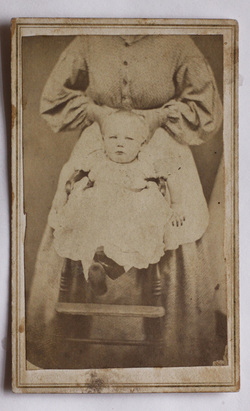 Happy Easter Monday. This past weekend my wife and I trekked down to see my family in NW Iowa. On Friday we had the priviledge of meeting up with my undergraduate printmaking professor from Northwester College, John Kaericher and his wife. We also had the opportunity on Saturday afternoon hit a few of the antique shops around the Spirit Lake, IA region and I picked up two little photographs. They are not all that unique or rare, but both made me chuckle. Both do display a few typical motifs, if you want to call them that. In the first image, a partially seen mother holds the child head upright. Often in pictures of children at such a young age you may find an arm or emerging from the side to help balance the wobbly child or even see the form of the mother having been draped with a cloth in the background. This one however makes no attempt to disguise the mother's presence. In the other image, a child contemplates another photograph...a motif I've mentioned before here. I doubt that this image is a mourning photograph, but it does make for an adorable image of the little girl in what looks like a velvet dress. This is your new blog post. Click here and start typing, or drag in elements from the top bar.
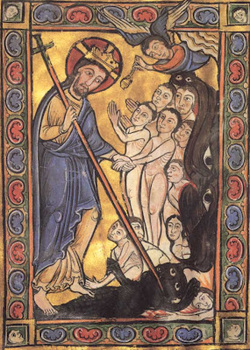 Several years ago I became enamored with the theology and ritual of Holy Saturday. I later led the liturgy for our old church community on Holy Saturday with this short homily. I hope you it provokes you to new thoughts and a deeper awareness. Invitation: We who are sitting here today have both the benefit of knowing history and the outcomes of this story:Good Friday brings Easter Sunday. And yet, because we know the story, we can never experience it again for the first time. But let me invite you to part company with your preconceived notions. Suppress your tendency to know what will happen. Try to hear the story with virgin ears not dimmed by your memory. And perhaps then we may glimpse a new reality of this dark day.Readings: Old Testament Job 14.1-4 Psalm Psalm 130 Epistle 1 Peter 4.1-8 Gospel Matthew 27.57-66, John 19.38-42 (Blended) Remembering our Journey Thus Far We are here appropriately scattered and silent. We have come this far in this Holy Week to sit here in silent wonder…confusion…sadness…profound tension of life and death. We have journeyed with Jesus into Jerusalem where crowds have thrown their cloaks and branches as he passed by in triumph on a donkey. We have witnessed intimate moments among friends. We have dined with Christ and the apostles in the Last Supper. We have watched helplessly as Judas betrayed his friend. We have been witnesses at the trial. We have seen injustice. We have suffered the horror of seeing God incarnate hung on the cross. And now, our Christ lies dead behind a great and immovable stone.And we wait in this the longest of days. Themes Amidst the Void Today is a day of tensions. Our historical vantage point allows us to know of what comes tomorrow. But today we are in between…caught in the middle of sorrow and hope. Today is lived in the tension between the crucifixion and the resurrection…between despair and joy…between presence and absence…between the darkness of Friday and the light of Sunday…between the defeat of life and the victory over death…the end and a new beginning. Today is a day of silence. Today we sit in a no-mans land of scripture. With only few words of history. Our scriptures say little of this day. Only Matthew (26.62ff) shares that the priests and Pharisees visit Pilate on the morning of the Shabbat, asking to secure the grave. As scripture is silent on this day, we become silent. In this sparse day of words, we are left to contemplate and re-live the disorientation of the original followers.Scattered, they observed the Sabbath in utter confusion… weariness… and hopelessness. As Christ lays silent, dead in the tomb we sit in silence to consider our own impending death. Today is a day to consider our mortality. We live in a death denying culture. Even in death, the mortician tries to beautify the body. We go to the doctor, take vitamins and medication, eat right and exercise not just to be healthy, but to prolong life and delay death. We all dedicate significant mental and physical energy to postponing that final breath. But the truth is we are dying from the moment we are born. Death is not one final act but the final moment of a long process of dying. Today we are reminded of our finitude that we may, as the Epistle has told us to live the remainder of your days “not by human desires, but by the will of God.” Today is a day of mourning. It was for the faithful of that time a day of profound loss. Not just of a friend and rabbi, but failure of a communities Messianic dreams.Their hope for salvation crushed, hung out to dry on a cross, and now dead in a tomb. Regardless of how these men and women understood salvation and Jesus as the Messiah, those hopes had literally been killed. This is a day of mourning of the loss of a friend and shared dreams. Today the alter remains bare. Today there is no celebration of the Eucharist, for Christ is not present here. Today is a day of rest. The tendency of today is to rush in preparation for tomorrow.Groceries to buy. Meals to prepare. Homes to clean for family gatherings. Miles to travel. And yet, the heart of this day is the Jewish Sabbath. A day of rest. Today we are to see the connection to the first Sabbath…the Sabbath of creation. On the seventh day of creation God ordained a day of rest from the work of creation.Today, God incarnate rests in a tomb from the work of redemption. Today is a day of waiting. Again because we are caught in this tension of historical knowledge that this Jesus will rise, we must wait in this tension. I suspect that we are prone to jump all too quickly through this dark day. We don’t like to dwell too long on such topics. But to forget about this day in between the extremes of death and the resurrection is to miss a significant part of the original experience. What we transverse in a few moments of reading was played out historically over a good number of hours. In the course of only a few verses we move from Friday afternoon to Sunday morning. To make our journey complete, we must not rush through this day. We cannot speed up the hours no matter how uncomfortable they may be. We must wait and pray like the disciples horribly suspended between Friday and Sunday. Today is a day of hope. As God rested from the work of first creation on the first Sabbath preparing for the for the eight day of creation and the first week; we are to see God Incarnate resting in the tomb from the work of redemption because tomorrow begins the first week of new creation…a new covenant. In the work of the cross we are to see an image of original creation. Tomorrow, what was lost, will be reclaimed. Tomorrow, the old will be made new. Tomorrow, what was broken will be restored. Tomorrow, those in exile will be welcomed home. Yesterday’s end brings tomorrow’s new beginning. And those amidst death, as we are, can hope for new life and resurrection because tomorrow we will see the death of death itself. 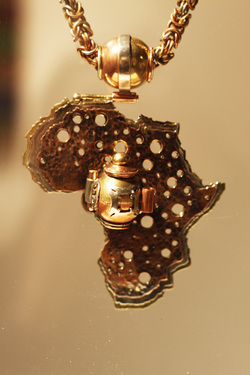 Last week was the first of UND's MFA final exhibitions. First up was Patrick Awotwe. Patrick's African influences are unmistakable in his beautiful work. He blends traditional symbols and imagery into both his metals and fiber works. I have included a variety of images from the show, including his artist statement. Enjoy. |
Ryan StanderArchives
January 2018
Categories
All
|
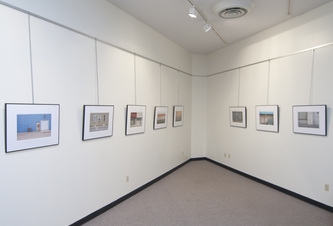
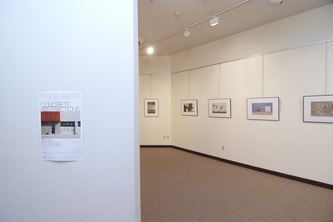
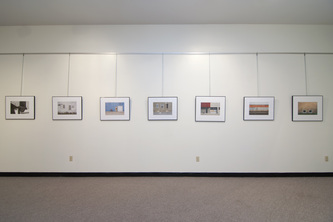
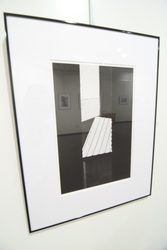
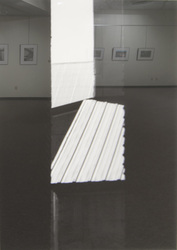
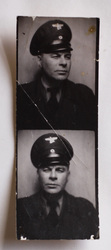
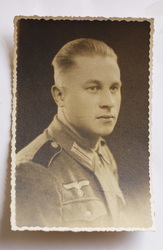
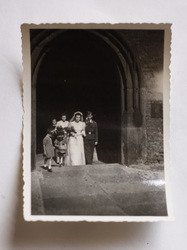
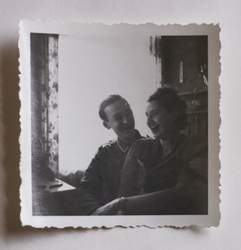
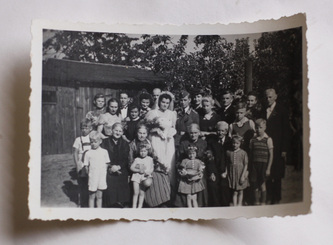
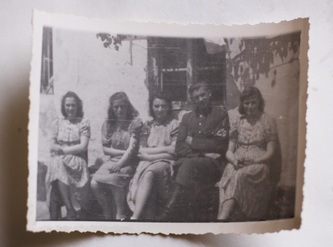
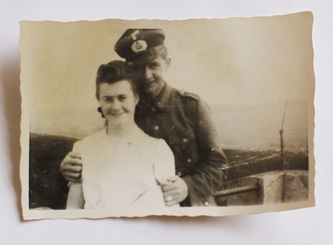
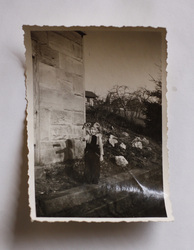
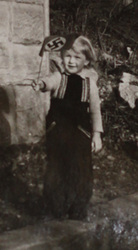
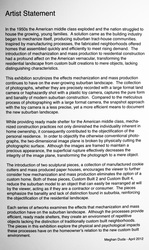
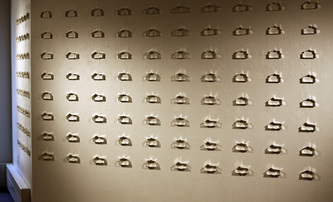
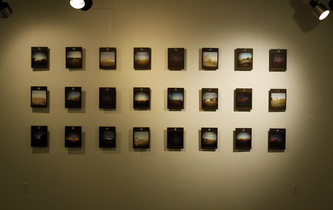
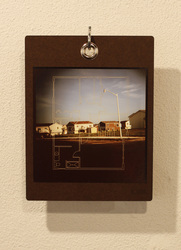
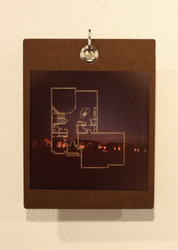
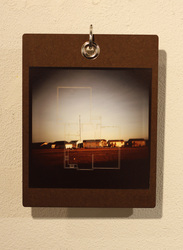
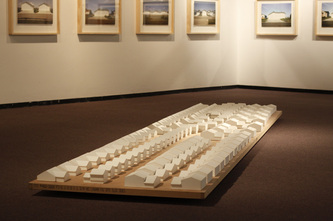

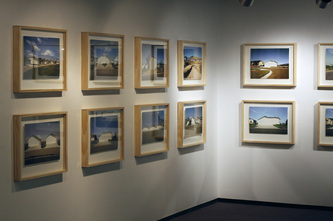
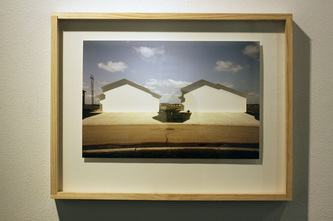
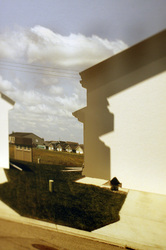
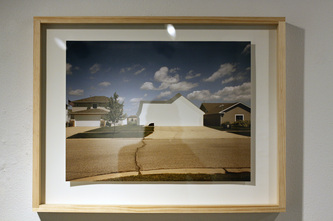
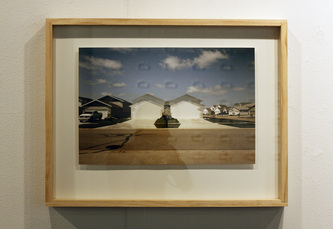
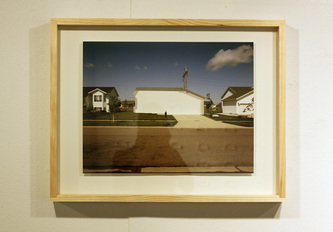
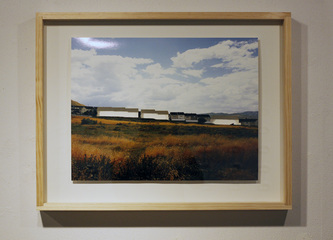
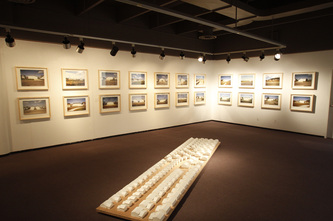

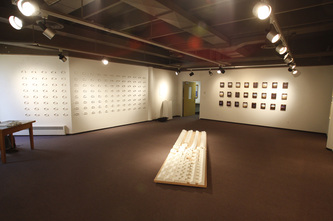
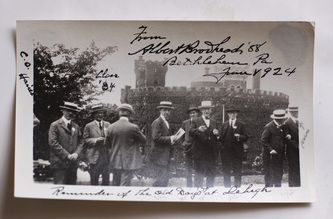
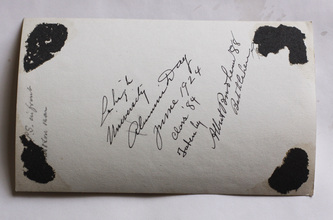
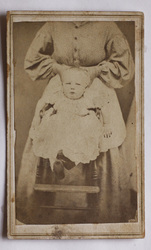
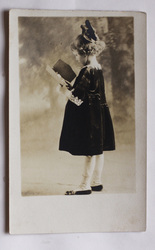
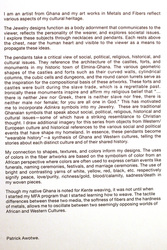
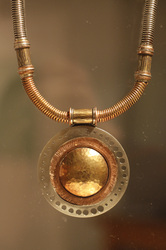
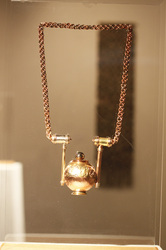
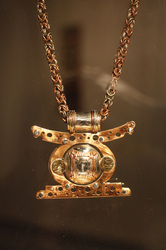
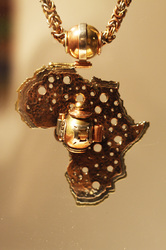
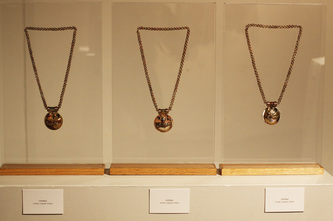
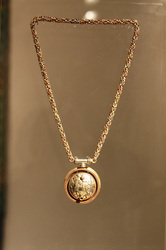
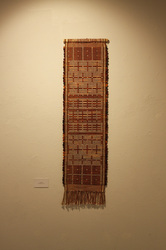
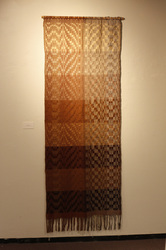
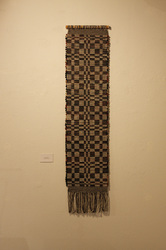
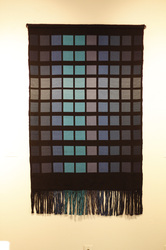
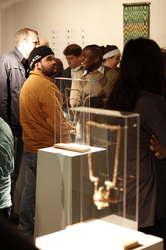

 RSS Feed
RSS Feed
